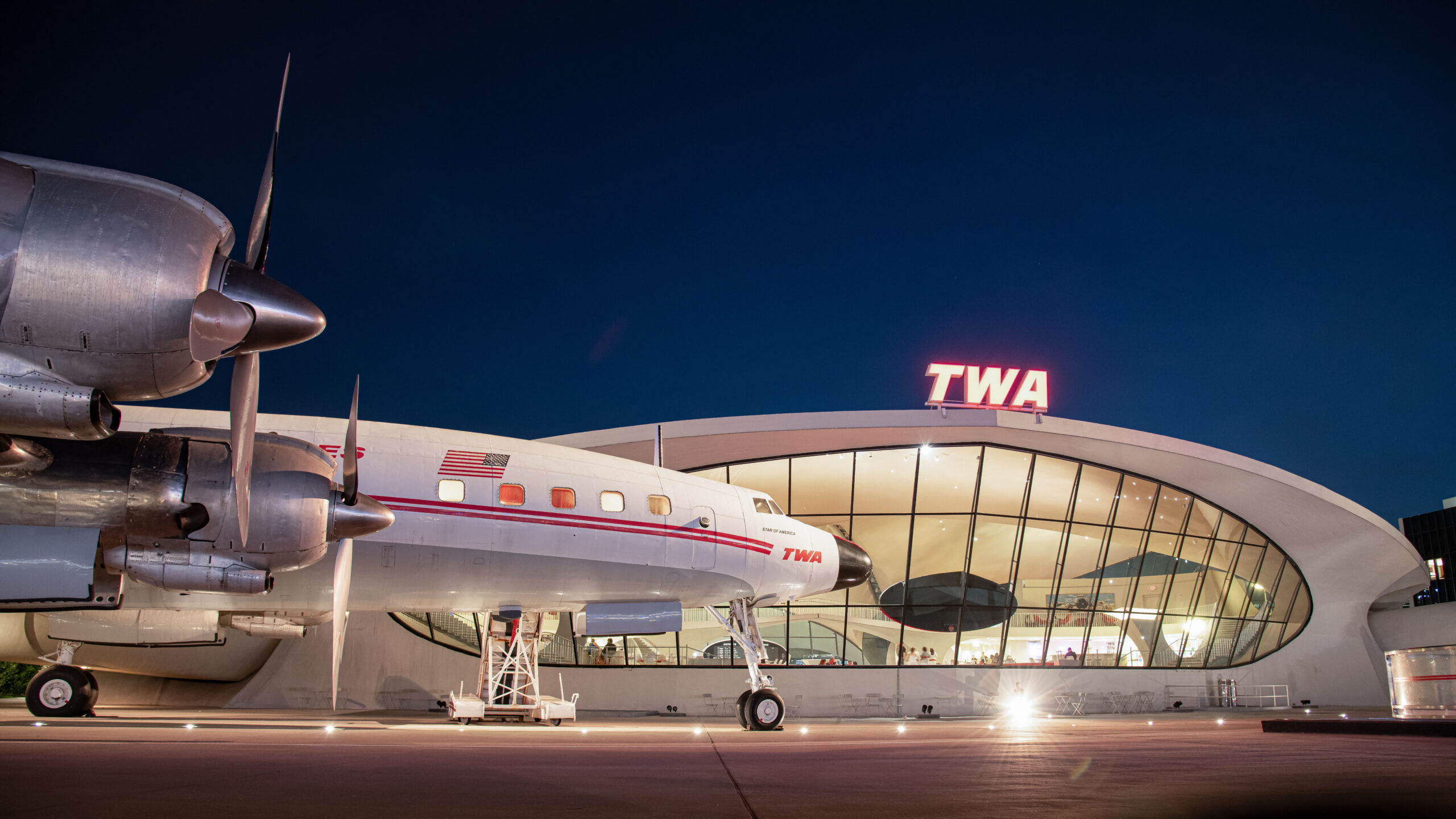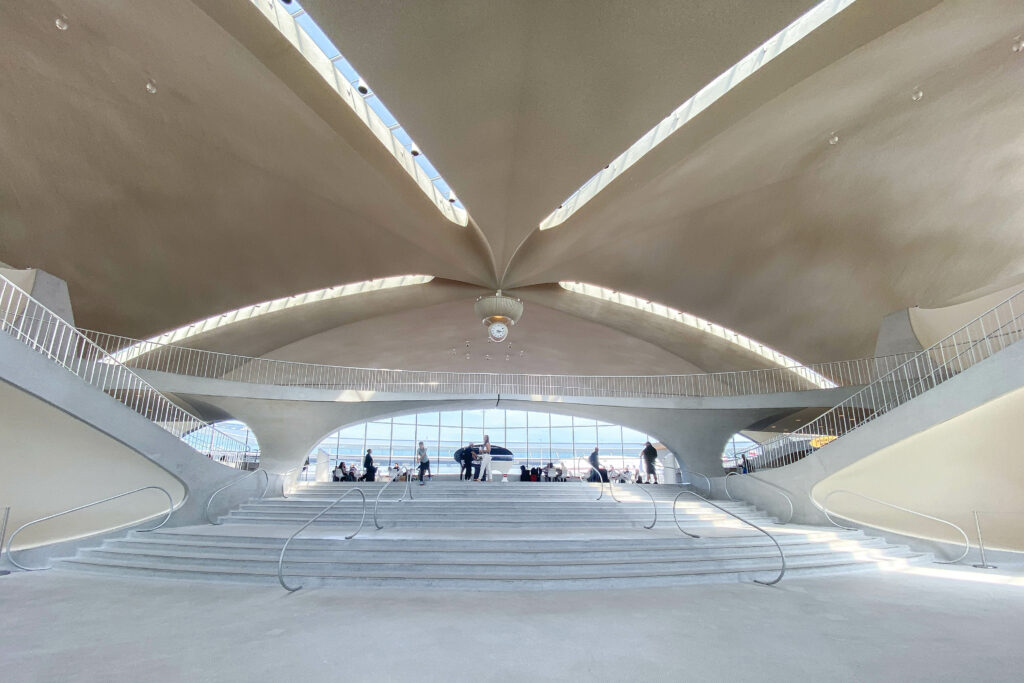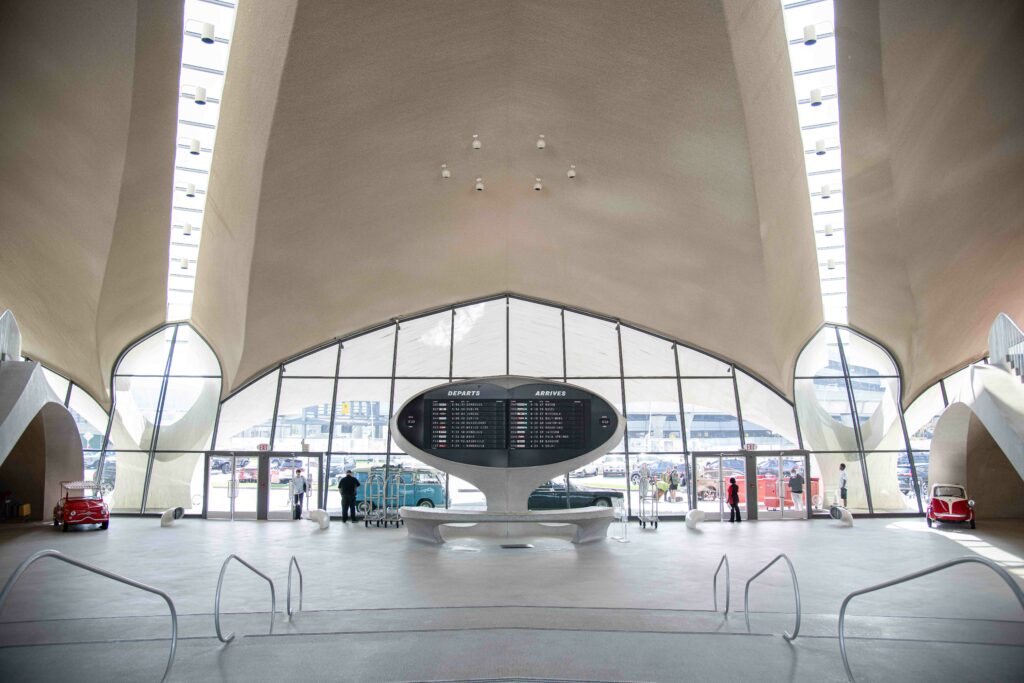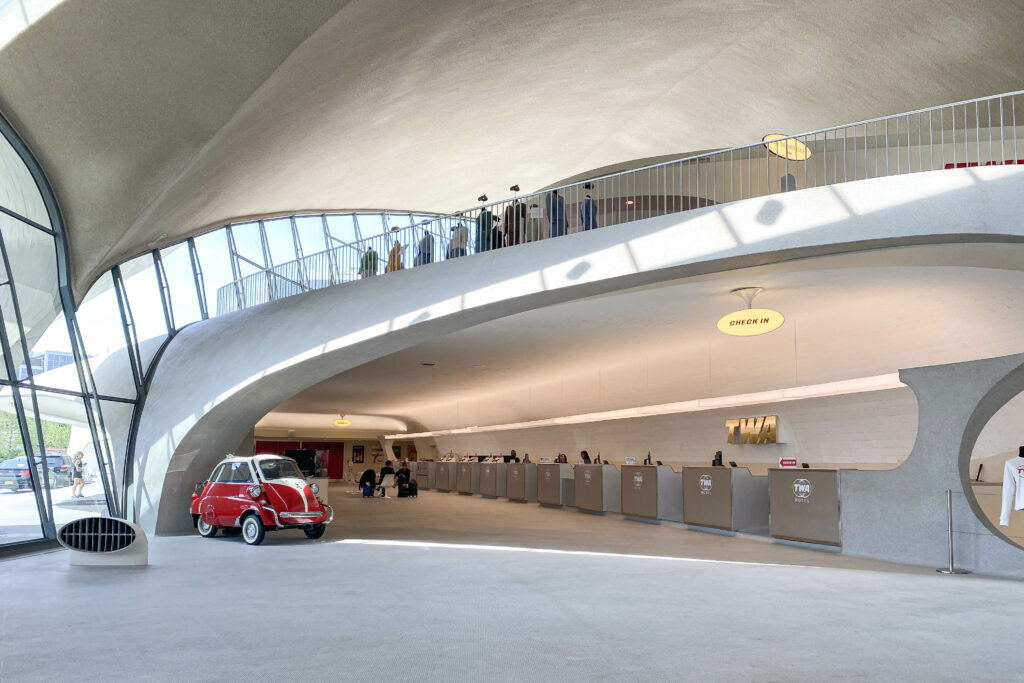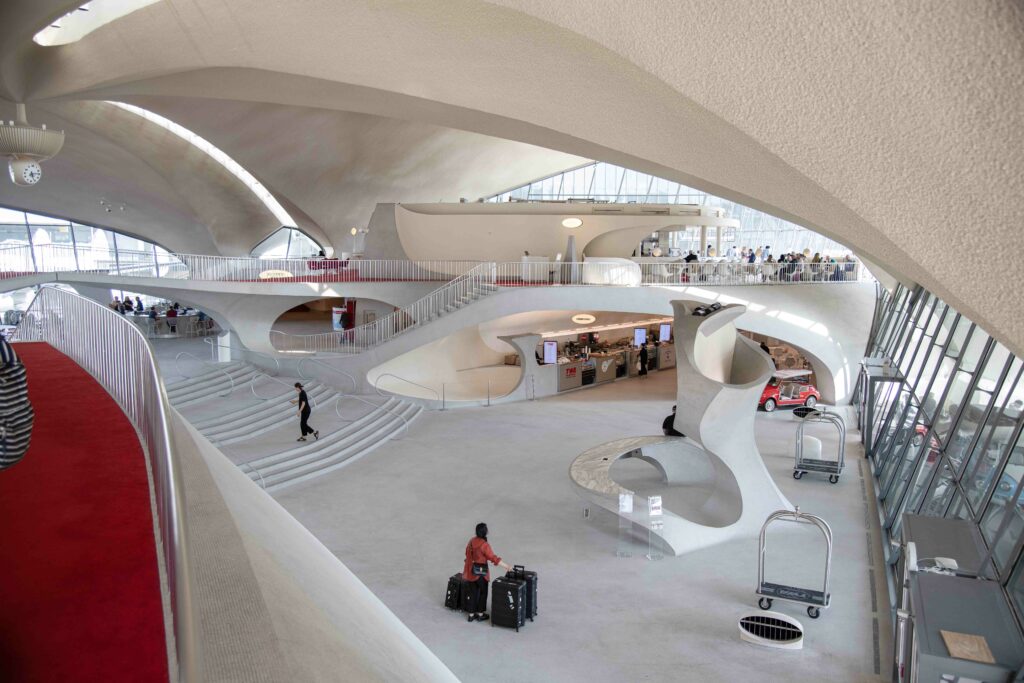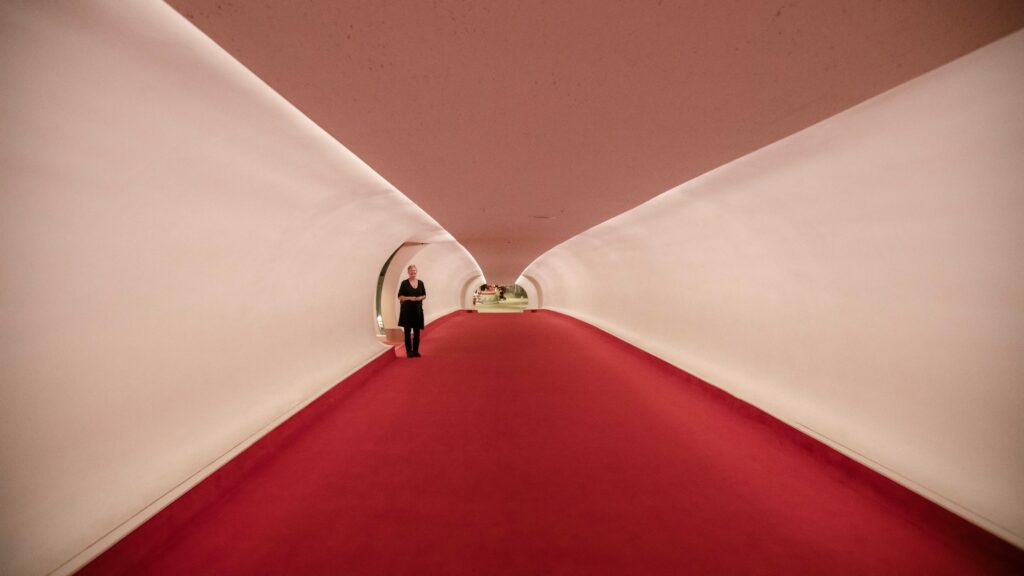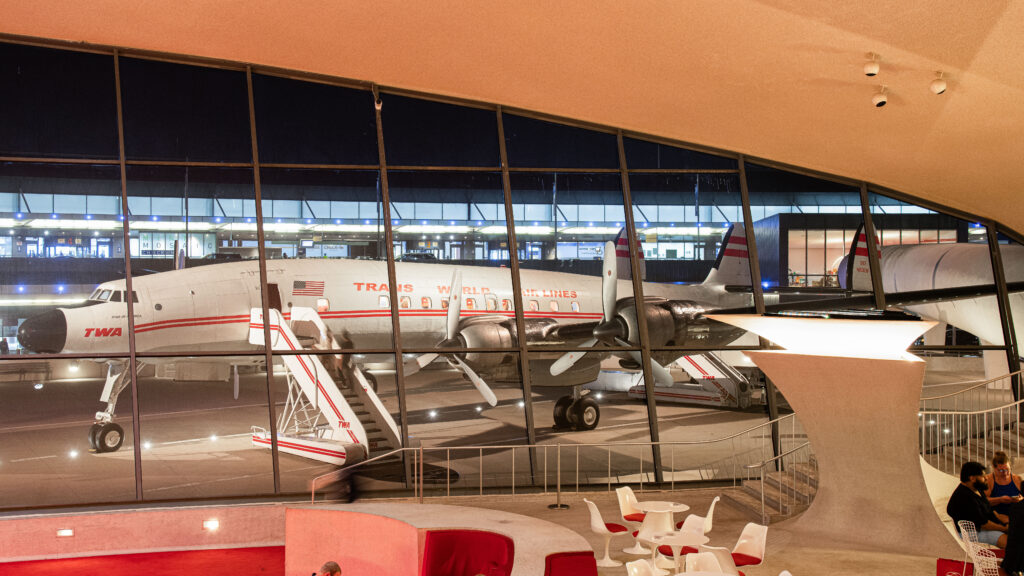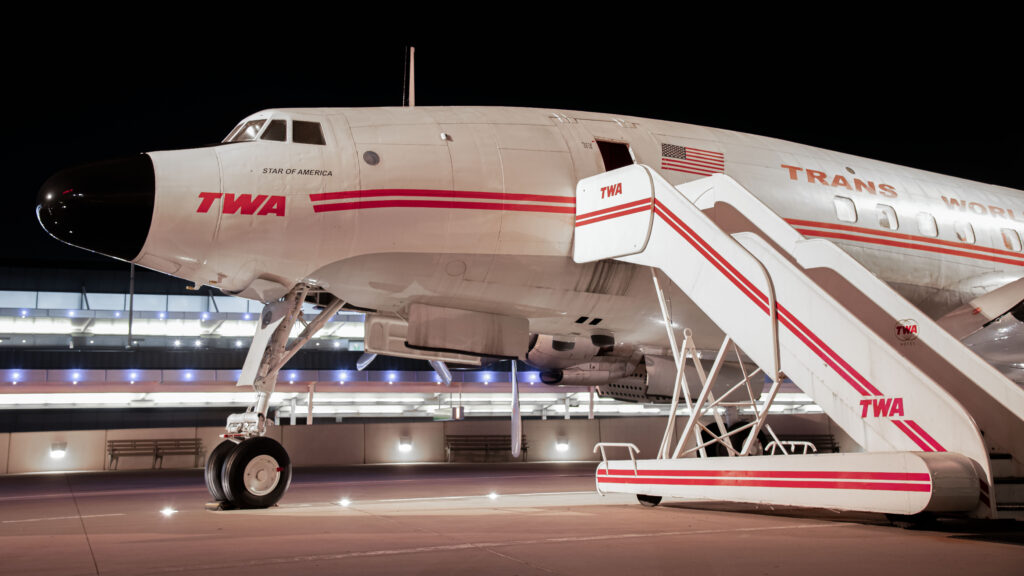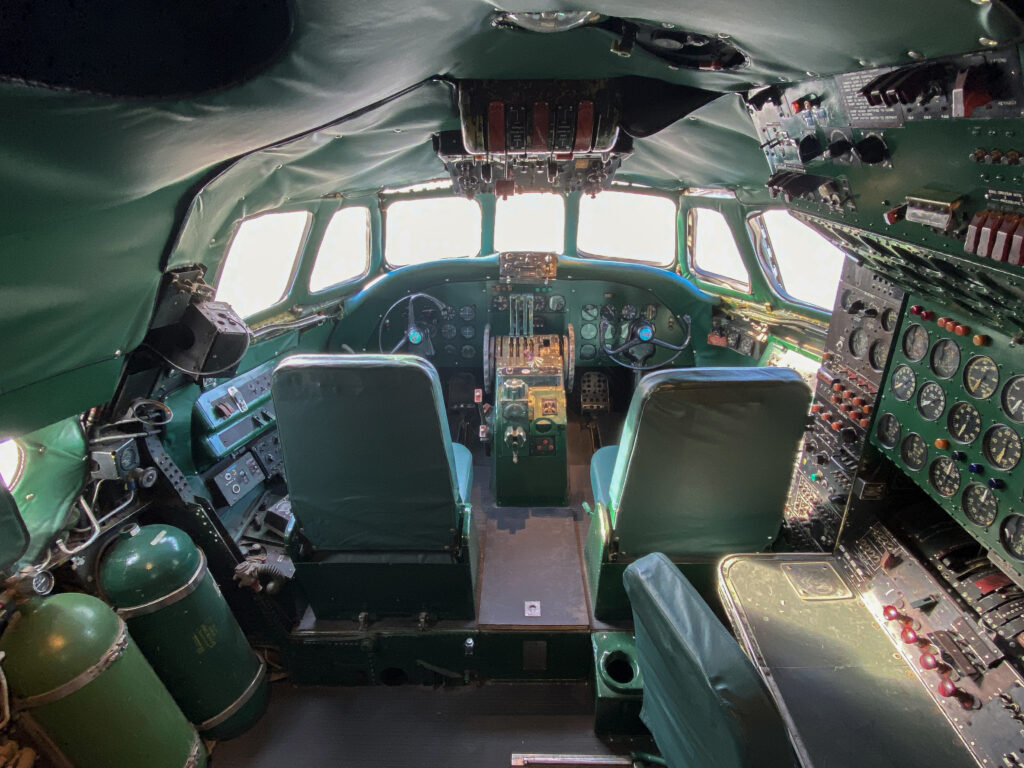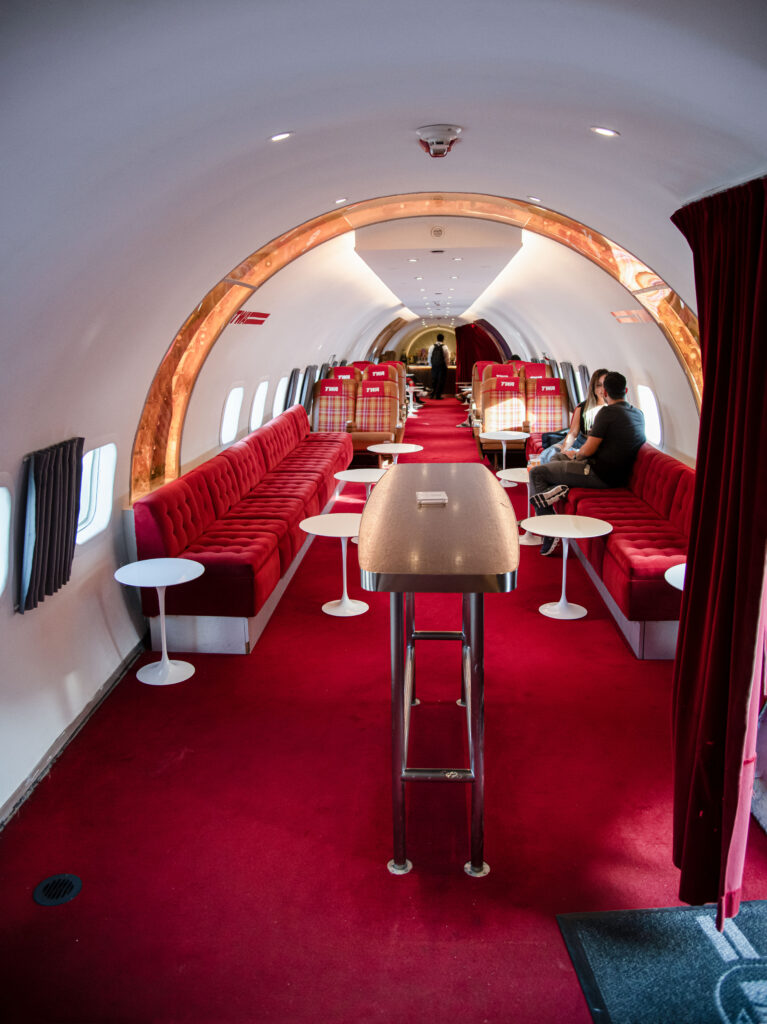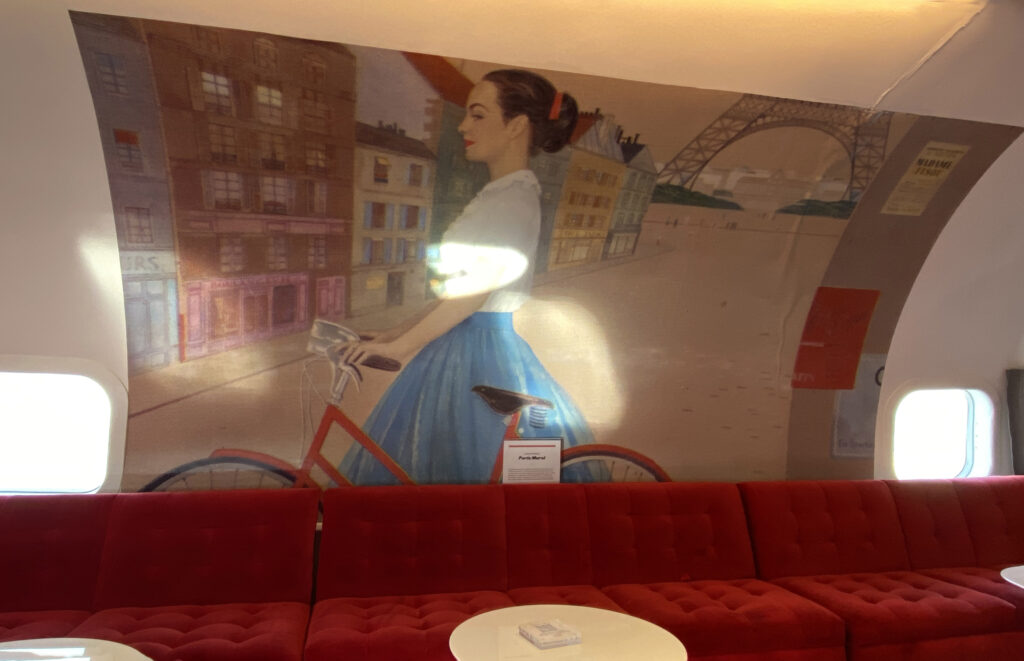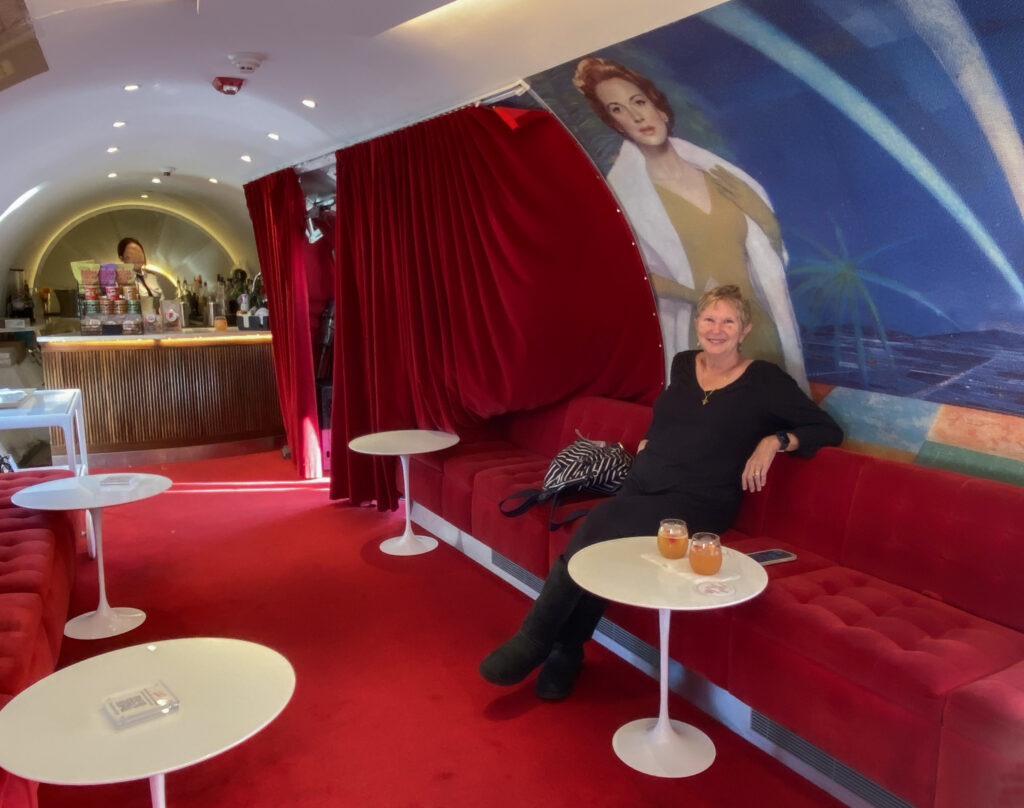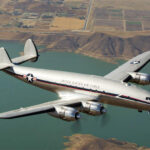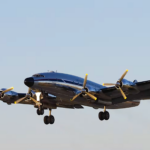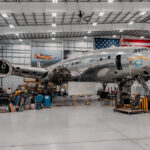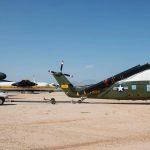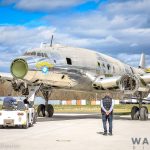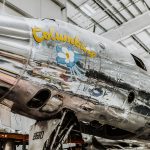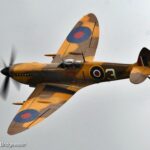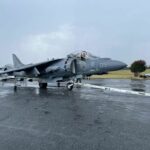By Stephen Chapis
A story about the Lockheed L-1649 Starliner, which once flew with TWA, cannot be told without briefly relating the story of the building where she resides: the TWA Hotel, which was once the Trans World Flight Center. World-renowned Finnish-American architect Eero Saarinen, who also designed the St. Louis Arch, the Massachusetts Institute of Technology Chapel, and the General Motors Technical Center, among others began design work on the center in 1956. A May 28, 1962, brochure from the TWA Public Relations Department said of Saarinen, “An artist of great imagination, Eero Saarinen sought designs that would stir in people the excitement and drama of travel. He viewed with disfavor the stark, uninspiring character of many rail and air terminals and the way they made the traveler feel insignificant.” His widow, Aline, said, “He wanted to provide a building in which the human being felt uplifted, important and full of anticipation. He wanted to create a space which would be dynamic, rather than static, and would reveal the terminal as a place of movement and transition.”
Construction crews broke ground on the facility in June 1959 when they began cutting and shaping boards into sweeping lines, followed by 1.5 million pounds of reinforced steel on top of the wood, and an incredible 10 million pounds of concrete that was poured in a round-the-clock operation that started in September 1960 and was concluded two months later. Each of the 236 individual panes of glass, totaling 8,500 square feet and 17 tons, were cut and fitted individually as were over 56 million quarter inch interior tiles.
The completed Center was, for the time, a marvel of air travel as revolutionary high-speed carousels that sped up the baggage claim service. High-speed conveyors carried luggage from the aircraft to the carousels and once picked up by passengers it was “only about 10 steps from the curb to where taxis, limousines or personal automobiles await the arriving traveler.”
A 307-foot walkway connected the Center to the Flight Wing. In this section there were seven aircraft positions served by fourteen telescoping jetways, thus “dashing across windswept ramps and clambering up steep boarding steps are past history at TWA’s Idlewild installation.” The Flight Wing also featured its own control tower to direct ground service and the edges of the ramp were equipped with large melting pits where plows would push snow, so snow piles would not interfere with taxiing aircraft.
Connected directly to JFK’s Terminal 5, the Center operated as a terminal from 1962 until 2001, by which time it had become a New York City designated landmark and in 2005 it was added to the National Register of Historic Places. In April 2015, JetBlue, the final airline to operate out of the original Center, announced the Center would be re-purposed into the TWA Hotel and it the only hotel operating within the boundaries of JFK Airport. Flanking the original Saarinen building are two towers that, in addition to the 512 hotel rooms, houses a conference space, restaurants, and an aviation history museum.
The hotel was officially opened on May 15, 2019, and if the building itself doesn’t strike ones sense of nostalgia, the presence of Lockheed Constellation L-1649A Starliner (N8083H) known as Star of America certainly tip one over the edge. This aircraft is no mere static display, it is a fully restored aircraft that operates as a cocktail lounge, The Connie Cocktail Lounge to be specific. A full history of Eight Three Hotel can be found here http://www.conniesurvivors.com/N8083H.htm, but what follows are the highlights.
Upon delivery to TWA in April 1958, it was ferried to Mid-Continent Airport, Missouri for conversion to TWA standards, and was ready to enter service the following month as N8083H. Before it even carried its first passenger, the Connie’s days were numbered because six months prior the revolutionary Boeing 707 jetliner performed its first flight and on March 20, 1959, the type entered service on TWA’s flagship San Francisco-New York route.
Following its short stint with TWA, the Starliner served with Alaska Airlines from 1962 to 1967 before being converted into a bulk fuel carrier. After passing through numerous Alaska-based operators the aircraft was impounded at Kenai Airport in 1978 for non-payment of parking fees. The following year, it was sold at auction for $150, restored and flown down to Chandler, Arizona where it fell in with the wrong crowd. The once proud prop liner was overhauled and modified to airdrop marijuana, a mission it allegedly performed throughout Central and South America until a propeller was damaged at a remote landing field in Colombia in August 1983. After a replacement prop was fitted with it was flown to San Pedro Sula, Honduras and abandoned.
On May 23, 1986, it was acquired by Maine Coast Airways and ferried to Auburn-Lewiston Airport, Maine via Fort Lauderdale, Florida, arriving on June 1, 1986. Though it changed hands at least three times, the Starliner sat in the same spot for 32 years. The final chapter of its life began in October 2018 when it was acquired and disassembled for transport to JFK by TWA Hotel developer MCR/MORSE Development. After a protracted 350-mile trip, which included a weekend stop at Times Square, the Connie opened along with the hotel in May 2019.
The experience of visiting the hotel begins before you even walk through the front door, as there are several vintage cars in the parking lot and popular 1960s music is being played both outside and inside the hotel. As you enter the lobby and walk up the large staircase, there she is, outside the massive window beyond The Sunken Lounge. After taking in the site of her classic and iconic lines you turn left to walk through the Saarinen Wing of the hotel. Along the way you pass two displays in the hallway. On the right hand side is “The Connie Story”, which features photos of the Connie throughout her life, including the famous New York City landmarks she passed on the way to JFK, while the left side, “Welcome to 1962”, highlights significant events, both large and small, of that year. What was going on when the TWA Flight Center was completed? The top three were John Glenn’s orbital space flight, the first James Bond movie, “Dr. No”, was released, and the Beatles released their first single “Love Me Do”. One of the smaller events? “The Jetsons” was the first primetime television show aired in color on ABC.
Once outside your senses are assaulted by the smell of Jet A and the constant roar of modern jetliners, the latter of which cannot drown out the music from the 1960s as you walk up the airstairs positioned at the Connie’s front entry door. Once inside, the outside world again fades away and to your left is the fully restored cockpit. Just behind the navigator’s table, complete with original emergency checklists, a section of the interior that is cut away and covered with plexiglass to reveal the inner structure of the fuselage.
The rest of the cabin is a mix of period airline seats, plush red couches, and tables, all of which is bathed is soft light. At the far aft section of the cabin is the bar, which features snacks, beer, wine, champagne, and signature cocktails with names such as “Eero Dynamics”, “Vodka is My Co-Pilot”, and the author’s favorite: “Control Tower Sour”. Flanking this area recreations of Mario Zamparelli’s “Hollywood” and “Paris” murals. In the late 1950s, Howard Hughes commissioned the American artist to paint these and twenty-three other murals in the lounge areas of TWA’s Connies. All of these elements combine to give today’s travelers a brief taste of what airline travel was like before full body scans, pat downs, and WiFi-equipped jetliners were the norm.
To find out how you can stay overnight at the TWA Hotel or just visit for a day go to https://www.twahotel.com. To read the full story about the TWA Flight Center pick up a copy of “Designing TWA: Eero Saarinen’s Airport Terminal in New York” https://shop.twahotel.com/collections/holiday-gift-guide-2023/products/book-designing-twa-eero-saarinen-kornel-ringli.







